Ancient Cave Art (B.C.E)
The earliest homo sapiens who walked the Earth etched and painted animals, human hands, symbols, etc. onto cave walls and rocks. What may look like simple drawings today are, in actuality, novelties. These are among the first pictures known to humankind, paving the way for future artists to advance the art form.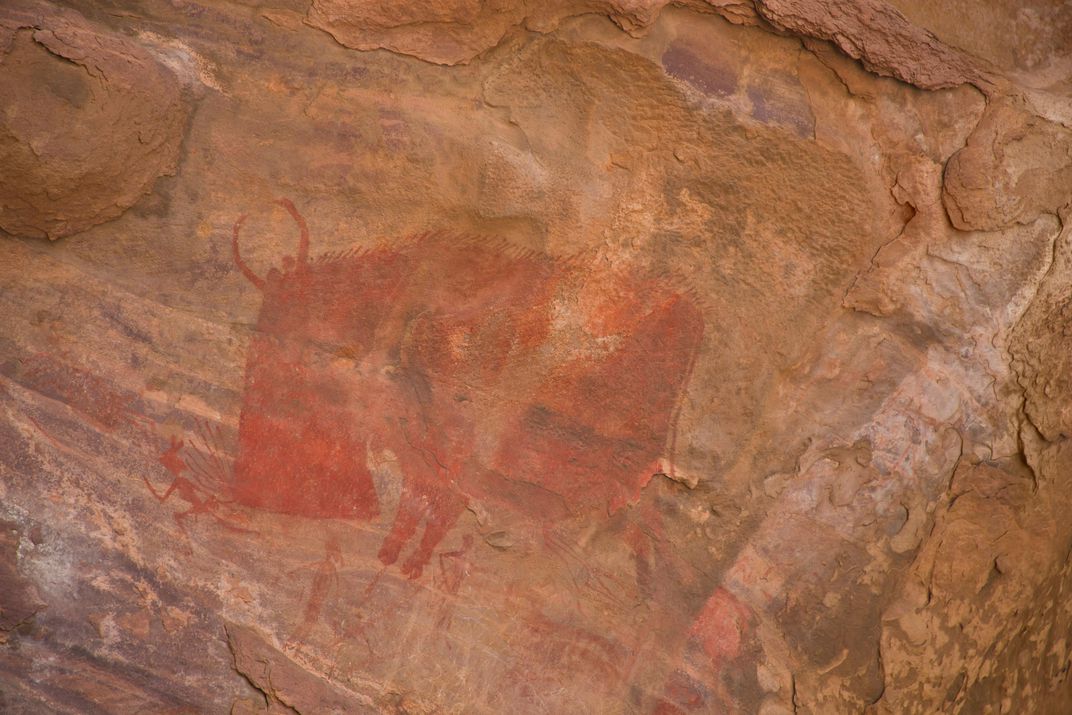
Rock shelter in India. ~ 13,000 B.C.E.
Drawings of a gaur, or Indian Bison, and human-like figures.
Frozen in time for us to reflect on, the clay illustration above heeds warnings of the Indian Bison’s threat toward humankind. Journalist Jo Marchant and photographer Justin Mott visited the caves where art and design were born, and in 2016, the Smithsonian Magazine published their article “A Journey to the Oldest Cave Paintings in the World”. These drawings and engravings tell stories, some of survival methods, others of fatal demises. But all with the intent to inform. While the names of the first artists may remain unknown forever, we recognize their tremendous impact on establishing art, whether they understood its future significance or not.Medieval
Mosaic Art
As time progressed, so did the the intricacy of art. The Greeks created mosaics, or floor and wall designs. Artists used small pieces of assorted material like shells, glass, stone, tile and pebbles to produce images like the one below. This medieval art style captured ancient lives, from their appearances and clothing attire to religious beliefs.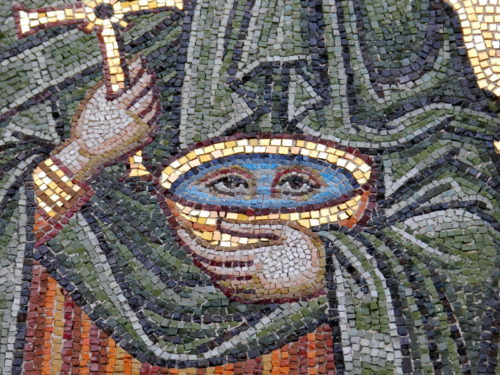
Church mosaic detail, Athens. Photo by: Helen Miles Mosaics
Renaissance
The European Renaissance focused on finding a new way to embrace life; a means for rebirth. Not only did politics, culture and the economy play into this way of thinking, but so did art. The Mona Lisa is one of the most famous Renaissance portrait paintings. Leonardo da Vinci redefined how women appeared in portrait art. Other artists used jewelry to emphasize status and side profile shots to highlight neutrality. In the Mona Lisa painting, da Vinci manipulates the woman’s mouth into a sly grin. This small but remarkable detail suggests that this Renaissance woman had a mysterious and enigmatic personality, which was an uncommon representation during this time.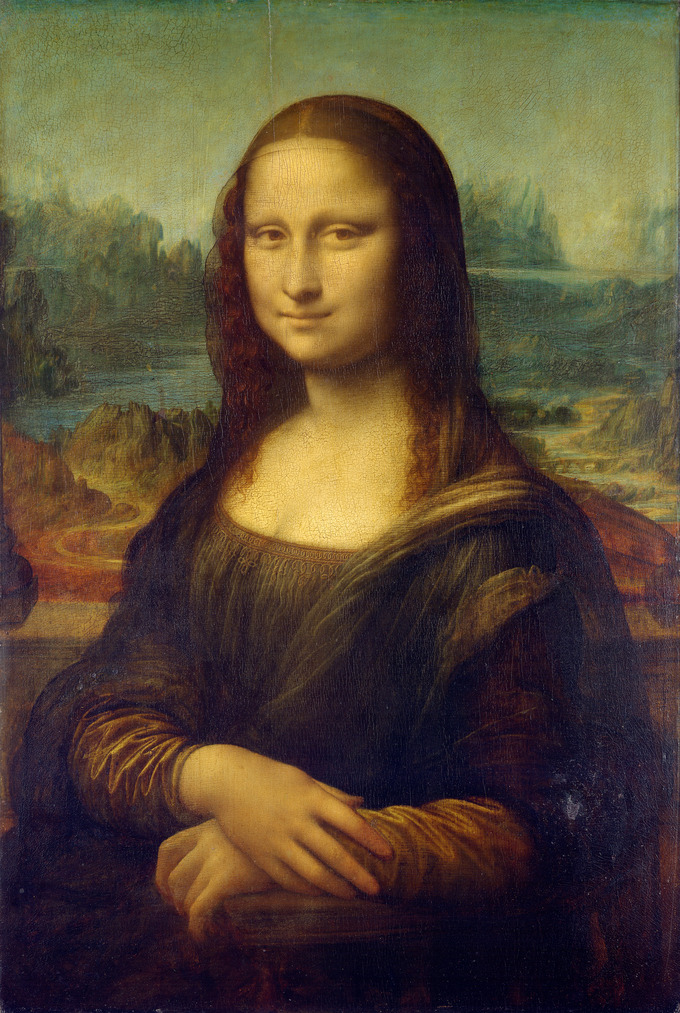
Mona Lisa by Leonardo da Vinci
Neoclassicism
Neglecting its art predecessors Baroque and Rococo, Neoclassicism implemented a realistic depiction of life. So, rather than painting with rose-colored glasses on, these artists urged to illustrate knowledge with reason. When a new art form surfaces, artists may undermine previous styles and genres, or even try to add their own flare to other works. To be frank, art shouldn’t have many restrictions. Artists should have the freedom to reap any style. But many Neoclassicist artists fought to erase art that they did not deem rational like the two previously mentioned. This new movement impacted not only art but society as well. The French Revolution was sobering and Neoclassical art mirrored that.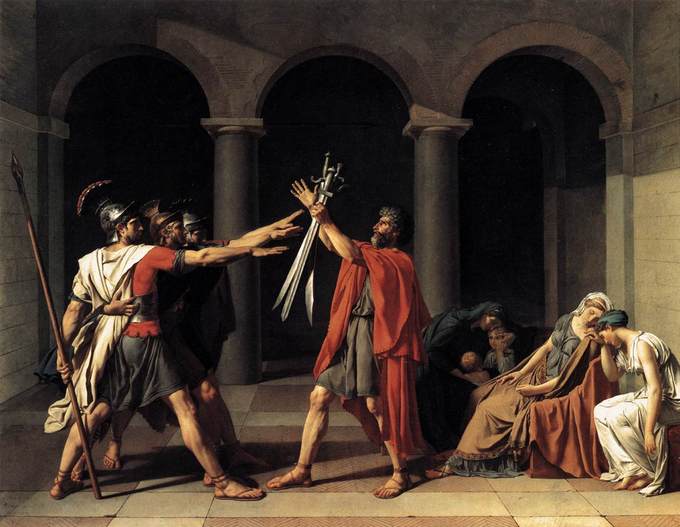
Oath of the Horatii by Jacques-Louis David
Romanticism
Ironically, the next genre to enter the art domain was Romanticism, which fell further from Neoclassical’s rational approach and expressed melodrama and sensationalism. The Age of Reason attitude was pushed to the side, allowing room for encouragement, emotion and ideation. Art does inspire art in many ways. In this case, Romanticism sparked insurgence. “Romanticism is precisely situated neither in choice of subject nor exact truth, but in the way of feeling” — French poet Charles Baudelaire.
Wanderer above the Sea of Fog: Caspar David Friedrich – The Kunsthalle (Hamburg)
Academic
This movement condemned creative liberties, dictating nearly every aspect of the piece. I wrote that art shouldn’t have many restrictions, but during the Academism period, artists adhered to strict, conventional formulas taught at the French Academy of Fine Arts, or Academie des Beaux-Arts and other European institutions. Academic art professionals, critics and teachers during this time would probably laugh at the phrase, “anyone can be anything.” If you weren’t already prestigious at the craft or didn’t know someone who could pull strings, then being part of the academic movement was probably not in the cards for you.
The Shepherdess by William-Adolphe Bouguereau.
Symbolism
Let’s travel to the beginning of the 20th century, when art spiraled into daunting images of skulled faces, morbid death, and immoral spirits. This work is comparable to Romanticism. Both intend to capture emotion, but they do so in wildly different ways. In a literature or art class, you may have been asked, “What is the deeper meaning?” On a few occasions, perhaps you could not find the depth in someone’s work. Well, if it wasn’t painstakingly obvious by the title, every single speck of symbolist art is meant to be symbolic and meaningful. The image below shows death taking the soul of a grave digger. This symbolizes how death creeps up and can take one’s life at any moment.
The Death of the Grave Digger by Carlos Schwabe
Expressionism
Taking a page from Symbolist art, Expressionism was also full of dark disturbances. One characteristic that separates these artforms, is the use of unconventional human appearances. In “The Death of the Grave Digger,” death is portrayed by a beautiful slender woman. If an Expressionist artist were to remake that painting, the soul-taker would look more haggard and disfigured.
Cardplaying by Otto Dix
Abstract
In 1910, this type of art resurfaced with a new name to account for prehistoric drawings like religious symbols and various shapes carved into stone. Of course, these artists had access to more than just knives and stone, as well as loads of knowledge from past creators. Impersonal shapes, figures and colors decorated the canvases, lacking a clear subject.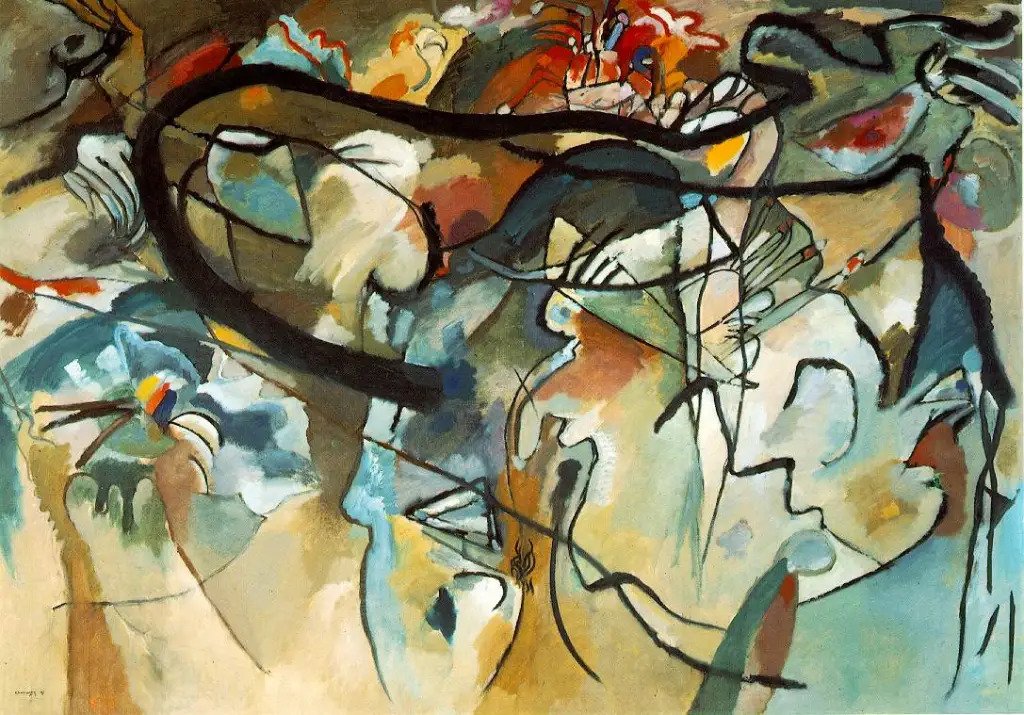
Composition 5 (1911) by Vassily Kandinsky
Contemporary Art
Abstract, surrealism, photorealism, pop art, conceptualism, minimalism, street art — these are just some styles that fall under contemporary, or present-day art. All artists create in their own distinct way. At Shuffled Ink, we manufacture custom products like playing cards, games and tarot. This allows our client innovators to design without limits. In October, to reach out to more artists in the card community, we hosted a Card Art contest. The idea was to promote originality in one’s craft. Its structure intentionally resembled the canvases our contestants would be drawing on — blank and open for opportunity. During our month-long competition, we received hundreds of submissions from insanely talented artists. After learning a bit about these art movements, it may be easier to group these artists into certain categories. Featured below are some pieces entered to #ShuffledInkArt on Instagram, Facebook and Twitter.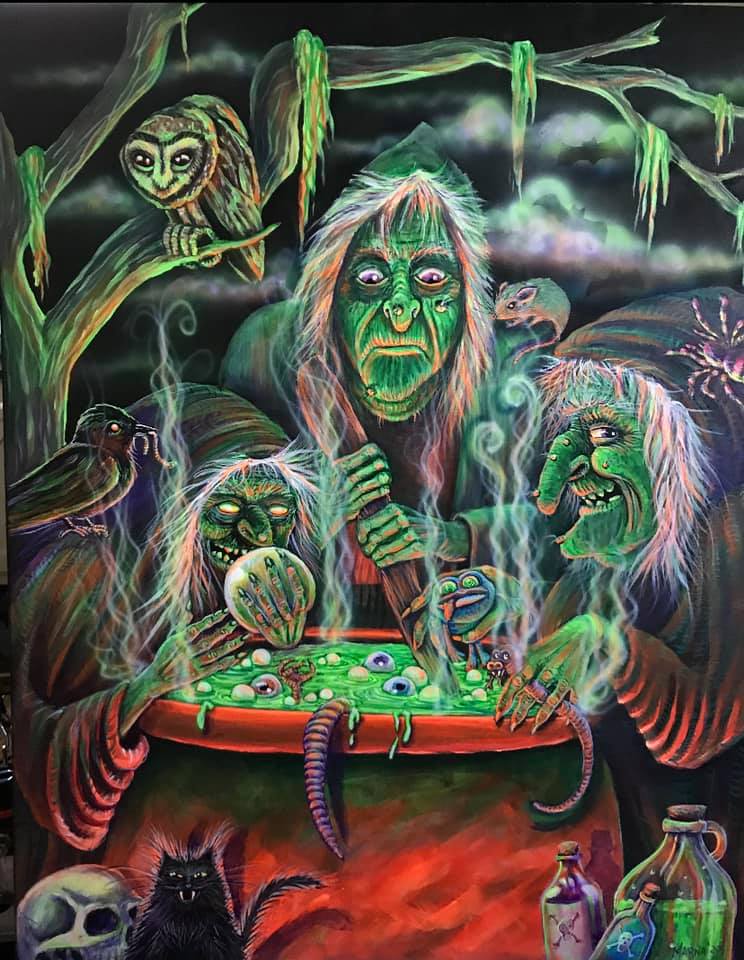
1st contest winner. Submission by Marna Blakewell
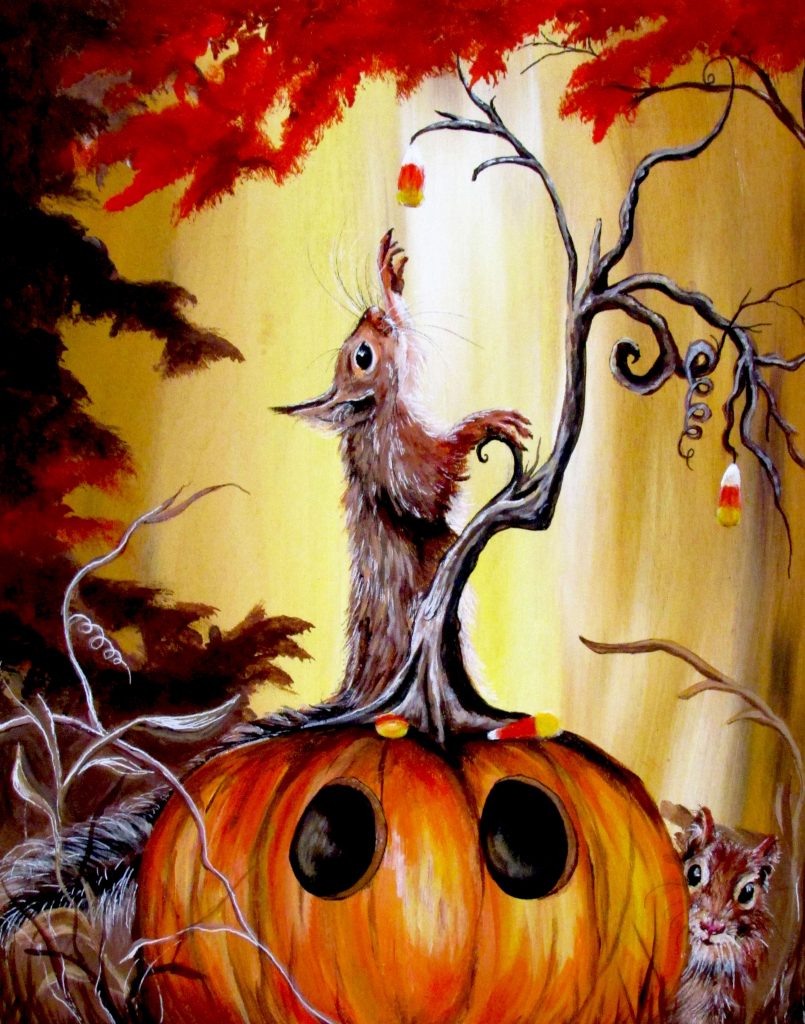
2nd contest winner. Submission by Brittni Barranco

Among the 5 finalists. Submission by @mad_is_sin_gremlin

Among the 5 finalists. Submission by @zhade_evgenia

Among the 5 finalists. Submission by @joe_livingston_illustration





About Shuffled Ink
Shuffled Ink is a multigenerational family business that specializes in printing custom playing cards, tarot & flash cards, custom card games, packaging and more for businesses and individuals worldwide.
To receive complimentary samples of our card products, either follow this link or please include your delivery address and phone number on your custom quote request form.